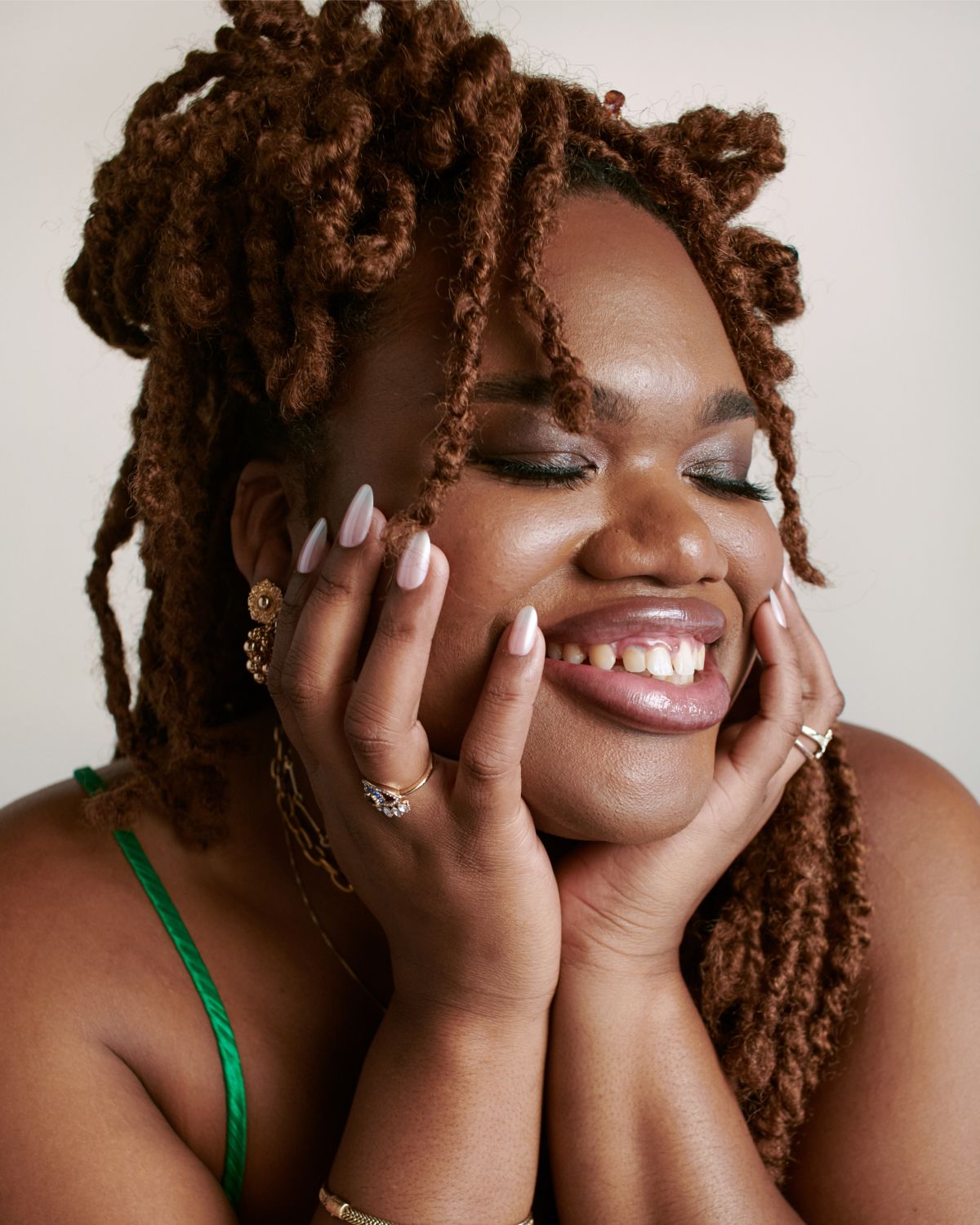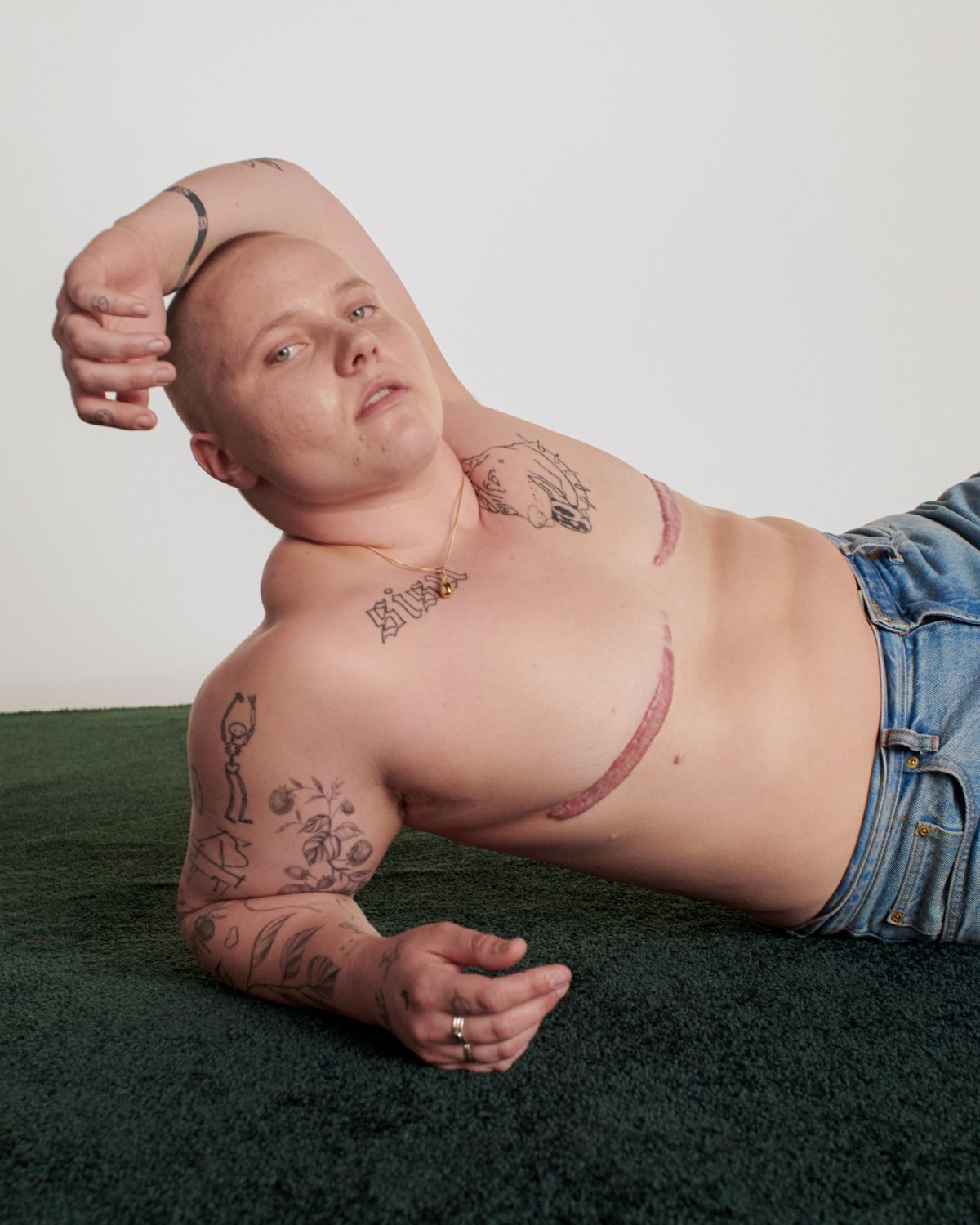How do I navigate my partner’s evolving relationship to their body?
I love this question for so many beautiful reasons. As a person who has experienced both sides, it is great that we are acknowledging the fullness of this evolving process. Beyond the physical, your partner is probably experiencing a lot of mental shifts, too. The number one thing is to be aware of their actions, speech, and reactions toward their body before you share your own, no matter how positive, negative, or concerned.
Trans people are some of the most self-aware folks on earth because society forces us to constantly scan our presence. When your trans partner tells you something about their body, whether direct or to themselves out loud, it is their truth. Having been in mostly T4T (trans for trans) relationships, there have been many moments of learning and listening.
As you navigate having a trans partner, it’s normal to want to affirm them as much as possible, use the correct term, make sure your partner knows that they are loved, found attractive, etc. While the sentiment and effort is appreciated, at times it leaves no room for our trans partner to feel full, stripping them of the process or experience of being an evolving human. Let your partner take the lead by inviting them to tell you the things that give them joy or make them feel comfortable and then follow after.
For example, there have been moments in my current relationship or past where I tried to show my trans partner love or uplift them, but ended up affirming their bodies in ways they weren’t aligned with. I’ve learned it is their choice whether they want to accept that affirmation as positive or not. That agency not only includes what they can physically do with their bodies, but how they feel about them, and those feelings can change overtime.
The best way we can navigate a relationship that will forever move—that will stay fluid as one grows and unpacks—is to act as a cushion.
Be a place to rest from societal pressures, a place to fall if internal expectations aren’t met, or just a safe place to sit and express or experiment with versions of their best selves. And when we start to recognize positive patterns or moments where we are in sync with our partner, that is the moment (with PERMISSION) to affirm, give positive feedback, or bring up genuine concern (if need be) about your partner’s body. The trust has been built. A foundation has been laid to invite you into yet another level of themselves.
You support and love them, period! Whether you’re trans or not, we all know the feeling of being at odds with our body, leading us to re-learn and re-examine.
Having someone help create that space for you to comfortably explore these feelings and still be received as desirable or sexy is so pivotal.
I’ve been blessed with a man that really loves and holds me down. In the beginning of my transition when nothing of my body made sense to me, my partner would come home and share his readings and new findings on gender theory and praxis (which means to put theory into practice). This really stretched and challenged what I conceived as possible.
Having someone invested in finding the language to help me describe what I was experiencing shaped the trajectory of my transition. I may not have felt comfortable in my neighborhood or classrooms, but knew home in someone that reflected and held me. And I hope you’re able to do the same for your partner how they need it.
Relearn with them.
Offer tools and praxis.
Do the research.
Give space. And don’t ask your partner to define things they may not have answers, experience or language for yet.
It’s moving, affirming and encouraging to have someone that is willing to actively prove their investment in your life, well being, and identity.
Recognize that it’s your partner’s journey and you kinda just need to be their number one supporter. They’re gonna have some good days, some bad days, and some days where they don’t even think about it. So you just need to learn to be patient with them.
I’m forever grateful for my fiancée and how she gave me the safest of spaces to explore my gender and body. She was there for me every step of the way. I’ll never forget the day I finally told her I wanted top surgery. She just held me as I cried in her arms. I was so relieved to finally admit it to myself and take that first step towards gender affirmation.
She supported me while I fought with my insurance. She drove me to all of my pre and post op appointments. She watched YouTube videos with me of other peoples’ experiences. She emptied my drains and even wiped my butt that first week after my top surgery. She gave me exactly what I needed in those moments. She gave me space to breathe and to learn things on my own, but was also right next to me helping me get through some of the heavier moments.
I got pretty lucky with my fiancée, the perfect example of caring for a partner’s evolving relationship to their body, but my top surgery didn’t have the “perfect” results so many expect. Part of my journey became navigating voices from other people and their opinions of how my scars look. Before surgery, I knew I was prone to healing with keloid scars (raised scars from an overproduction of collagen in the body). They pose no health risk and are purely a matter of aesthetics. However, people online can be ignorant. They assume that my surgeon must have botched my surgery (which is wildly untrue, because she did an incredible job contouring my chest). My fiancée helped me filter out this unnecessary criticism. She helped me research keloid specific scar care and at the end of the day, just embraced my top surgery results because they were, and are, my top surgery results.
Patience is its own form of love.
Don’t take certain things personally when your partner has a day or week or month where they don’t want to be intimate because their gender dysphoria is so bad. It’s important you create a safe space where they feel they can communicate that with you.
Explore all questions, or read more about navigating the holidays
NFAQ is an educational guide for Not-So-Frequently-Asked questions, submit a question to expand this discussion.
HaveMoreQuestions?
NFAQ is an educational guide for Not-So-Frequently-Asked questions, submit a question to expand this discussion.





